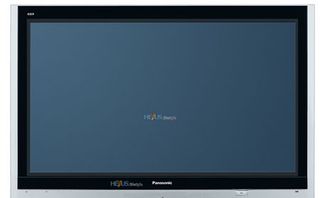Exclusive: CEA Says TV Set Still Video Viewer of Choice

TV remains the "key" viewer for video in U.S. homes, but that video is increasingly coming from the 'net, which is taking some toll on traditional distribution.
That is one of the conclusions of a new market research analysis being released today by the Consumer Electronics Association.
Multichannel News received an early copy of the report, which found that 45% of TV households reported getting some programming on their TV's via the Internet (from a Netflix or Hulu, for example), up from 2013's 28%.
Nearly half of TV households (46%) also watched video on a portable computer (laptop, notebook or netbook), up from 38% in 2013, or on a smartphone (43%, up from 33% in 2013), or on either a tablet (35%, up from 26% in 2013) or a desktop computer (34%, up from 30% in 2013).
Consumers who said they receive Internet-based programming are also doing so on other devices, including gaming consoles (50%), Blu-ray players (405) and a service such as Apple TV or Roku (33%).
But Internet-only viewers are still a small fraction at 5%, about the same as 2013.
That number could be growing. CEA says that according to figures as of January 2014, 24% of all households had an Internet-enabled TV, with 16.1 million app-enabled TV's projected to ship this year.
Multichannel Newsletter
The smarter way to stay on top of the multichannel video marketplace. Sign up below.
The vast majority of U.S. households (93%) have used TVs to access video in the past 12 months. Traditional TV programming is primarily accessed through a pay-TV service, with cable claiming half-52%--of that subscriber base with 60 million subs, down from 63 million in 2013.
Satellite services boast 36 million households (31%), up from 35 million in 2013. Fiber to the home video services account for 14% or 16 million subs, up 33% from 12 million in 2013.
Seventeen percent of TV households receive television programming through an antenna, with only 6% relying exclusively on an antenna for their TV, in line with 2013 findings.
CEA says there has been a seven percentage point decline in the number of homes using traditional pay-TV platforms since 2010, when 88% of households said they subscribed to cable, satellite or fiber to the home. And since 2005, said CEA, cable service subs have declined from 61% to 52% in 2014. Even with the increases over that time for fiber and satellite, total paid subs are still down. "The decline in traditional pay TV service may be partially attributed to increasingly accessible Internet sourced television programming on TVs as well as the adoption and use of alternative video-capable CE devices in homes," said the report. "Inexpensive streaming options, such as Netflix and Hulu Plus, are also contributing to the overall decline."
The numbers appear to bear that out. Over the past 12 months, in homes not subscribing to pay TV, "non-subscriber use of notebook, laptop or netbook computers to view video content increased from a quarter (25%) in 2013 to over half (53%) in 2014. Use of smartphones for in-home video consumption increased among non-subscribers from 27% in 2013 to 46% this year, and 27% of non-subscribers now view video content on tablets compared to just 13% in 2013."
The CEA report found that 10% of pay TV households currently subscribing to cable, satellite or fiber video services said they were "likely" to cut that cord in the next 12 months. Of those, 23% said they were going the all-Internet route, with 20% saying they would be getting an antenna and 17% said they were swearing off video entirely.
The report is based on findings of a telephone survey of 1,006 adults, 504 men and 502 women 18 and older, living in the continental United States. The survey was conducted April 24-27, 2014, with 606 landline interviews and 400 by cell phone.
The margin of error at 95% confidence is +/- 3.1%.
Contributing editor John Eggerton has been an editor and/or writer on media regulation, legislation and policy for over four decades, including covering the FCC, FTC, Congress, the major media trade associations, and the federal courts. In addition to Multichannel News and Broadcasting + Cable, his work has appeared in Radio World, TV Technology, TV Fax, This Week in Consumer Electronics, Variety and the Encyclopedia Britannica.










